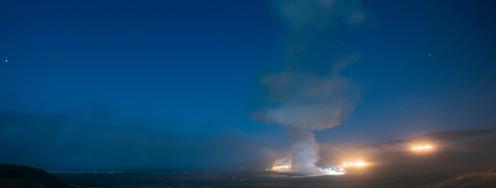Can North Korea Put a Nuclear Warhead on a Missile?
On the radar: Misperceptions on missiles and miniaturization; American atomic anxieties; DNI on Kim’s intentions; Revamping Nunn-Lugar; Balance, not crisis; and Nuclear tourism.
On the radar: Misperceptions on missiles and miniaturization; American atomic anxieties; DNI on Kim’s intentions; Revamping Nunn-Lugar; Balance, not crisis; and Nuclear tourism.
April 12, 2013 | Edited by Benjamin Loehrke and Alyssa Demus
Expert say maybe, not on ICBM - “North Korea likely has the capability to mount a plutonium-based nuclear warhead on the shorter range Nodong missile, which has a range of about 800 miles, [but] Pyongyang still lacks the ability to deploy a warhead on an ICBM, although it shows progress at this effort.”
--”[For delivery by ICBM,] North Korea would need to conduct missile flight tests with a re-entry vehicle and mock warhead, increase the explosive yield of the warhead (possibly requiring its further miniaturization), and improve the operational reliability of the warhead and missile,” wrote David Albright at 38 North. Full analysis here. http://bit.ly/YhYSEM
Intel confusion - In a contested analysis, the Defense Intelligence Agency (DIA) “assesses with moderate confidence the North currently has nuclear weapons capable of delivery by ballistic missiles; however the reliability will be low.” The assessment, disclosed by Rep. Doug Lamborn (R-CO) in a budget hearing yesterday, prompted clarifications from the administration and South Korea.
--Department of Defense spokesman said, “It would be inaccurate to suggest that the North Korean regime has fully tested, developed, or demonstrated the kinds of nuclear capabilities referenced in the passage.”
--Director of National Intelligence James Clapper “released a statement saying that the assessment did not represent a consensus of the nation’s intelligence community and that ‘North Korea has not yet demonstrated the full range of capabilities necessary for a nuclear armed missile.” He also said, “North Korea has already demonstrated capabilities that threaten the US and the security environment in East Asia. We believe Pyongyang has already taken initial steps toward fielding a road-mobile intercontinental ballistic missile.”
--South Korea view: “We have doubt that North Korea has reached the stage of miniaturization.” Thom Shanker, David Sanger, and Eric Schmitt have the story for The New York Times. http://owl.li/k0ccw
Welcome to Early Warning - Subscribe to our morning email or follow us on twitter.
--Have a tip or feedback for the editor? Email earlywarning@ploughshares.org earlywarning@ploughshares.org. Want to support this work? Click here.
Anxious, uninformed - Americans are following the situation with North Korea with surprising intensity. Recent polls show a surge in media interest and anxiety about the situation. “Oddly, that skyrocketing interest does not appear to have translated into a better understanding of the North Korean threat that is drawing such great interest,” writes Max Fisher at The Washington Post. The same polls showed that 47% of Americans mistakenly believe North Korea can hit the U.S. with a nuclear-armed missile.
--”It’s not clear why Americans who pay more attention to news reports about North Korea are so ill-informed about its military capability and with the expert analysis of the country’s intentions. But, as The Washington Post’s Chico Harlan writes today, this sense of urgent alarm ‘plays into North Korea’s hands, amplifying the sense of crisis on the Korean peninsula.’” Full post here. http://wapo.st/ZqyTdB
Tweet - @chicoharlan: Somebody put a lot of work into this map -- every incident btw the N and S since the Korean War. http://bit.ly/ZevUsU
Behind the rhetoric - "Much of the rhetoric - in fact all of the belligerent rhetoric of late - I think is designed for both an internal and an external audience. But I think first and foremost it's to show that [Kim Jong-un] is firmly in control in North Korea," said Director of National Intelligence James Clapper yesterday. "I don't think [Kim Jong-un] really has much of an end game other than to somehow elicit recognition from the world, specifically the United States ... of North Korea's arrival on the scene as a nuclear power.” From Reuters. http://reut.rs/17uZFsV
New Kim on the block - Experts largely agree that Pyongyang’s bluster is merely business as usual and the regime doesn’t actually plan to start a war. Yet, one important factor is different from previous instances of North Korean provocations: Kim Jong-un. Even if he doesn’t intend on provoking a war, “because Kim has never managed one of these cycles... [before, and] officials fear he may not find the exit ramp.”
--Also different this time: China’s and Russia’s reaction. Moscow and Beijing are concerned because they perceive “Kim’s belligerent language is triggering responses from the US and South Korea that could affect the security balance in northeast Asia,” writes David Ignatius in the Washington Post. Full story here. http://owl.li/k0i6q
Modernizing Nunn-Lugar - Sen. Jeanne Shaheen and colleagues are set to introduce legislation “aimed at modernizing...Cooperative Threat Reduction and nonproliferation assistance programs.” The program, initially created to secure nuclear weapons and materials after the fall of the Soviet Union, would broaden its scope to counter WMD proliferation in the Middle East and North Africa” under the new legislation, reports Rachel Oswald of the Global Security Newswire. Full story here. http://owl.li/k0kAy
Tweet - @Gottemoeller: Just released: the 2013 G8 declaration on Proliferation and Disarmament http://t.co/mD1NTb6KAY
Stable impasse - The failure of recent nuclear negotiations between world powers and Iran to produce a deal “should come as no surprise.” Why? Because each side “has more to gain from preserving the status quo to acquiescing.” For Iran, maintaining its nuclear program is preferable to giving it up. For the U.S. impasse is better than war. The result: the present situation, which has been mischaracterized as a crisis, is actually more like a balance, write Benjamin Alter and Edward Fishman in The Atlantic. Full article here. http://owl.li/k0r6J
Events:
--”Pakistan: The Most Dangerous Country in the World.” Panel with Joe Cirincione, Philip James Walker, and Isaiah Wilson III. April 12 from 3:30-4:50 at the Conference on World Affairs, Boulder. Details here. http://bit.ly/151dxf0
--”Unhappy Endings: Apocalypse Now!.” Panel with Chip Berlet, Joe Cirincione, Howard Schultz, and Isaiah Wilson III. April 13 from 10:30-11:50 at the Conference on World Affairs, Boulder. Details here. http://bit.ly/151dwb7
--"The Strength of Dialogue: In Honor of JFK's Commencement Address (1963-2013)," Sergei Khrushchev, Brown University; former Rep. James Symington (MO); John Beyrle, former Ambassador to Russia; Vladimir Pechatnov, MGIMO University, Moscow; and Allen Pietrobon, American University. April 13 2:00-6:00 p.m. @ American University. Details here. http://goo.gl/dyBeR
--”The Future of the U.S. Nuclear Deterrent.” Amb. Linton Brooks. April 15 12:30-1:30 p.m. @ American Security Project. Details here. http://goo.gl/fnZc6
Dessert:
Smoking bear - Norwegian F-16s regularly shadow Russian long-range bombers as the bombers fly past the Norwegian coast during patrols in the arctic. Recently, a Russian Tu-95 bear bomber caught fire on the tarmac before leaving for such a patrol. Barents Observer asks, what would’ve happened if the bomber caught fire near Norwegian airspace, and what if the bombers were carrying nuclear weapons? http://bit.ly/10QExbq
The 23rd floor - “The radio room on the top floor of the Hotel Viru in Tallinn, Estonia hasn’t been touched since the last KGB agent to leave turned out the lights in 1991.” Now, the entire top floor, once home to KGB spies, is open to tourists.
--”On an August night in 1991...the hotel’s behind-the-scenes overseers simply vanished. Hotel employees waited for weeks before finally creeping up to the dreaded 23rd floor. There they found signs of a hasty departure: Smashed electronics, scattered papers and overflowing ashtrays.” And, its stayed that way ever since. Andrew Curry at the Smithsonian Magazine has the story. http://owl.li/k0Clk



